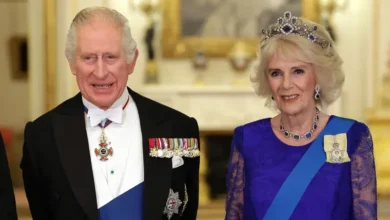‘Tidal wave’: How 75 nations face Chinese debt crisis in 2025

Many of the world’s poorest countries are due to make record debt repayments to China in 2025 on loans extended a decade ago, at the peak of Beijing’s Belt and Road Initiative, a report by the Sydney-based Lowy Institute think tank has found.
Under the Belt and Road Initiative (BRI), a state-backed infrastructure investment programme launched in 2013, Beijing lent billions of dollars to build ports, highways and railroads to connect Asia, Africa and the Americas.But new lending is drying up. In 2025, debt repayments owed to China by developing countries will amount to $35bn. Of that, $22bn is set to be paid by 75 of the world’s poorest countries, putting health and education spending at risk, Lowy concluded.
“For the rest of this decade, China will be more debt collector than banker to the developing world,” said Riley Duke, the report’s author.
“Developing countries are grappling with a tidal wave of debt repayments and interest costs to China,” Duke said.
What did the report say?
China’s BRI, the biggest multilateral development programme ever undertaken by a single country, is one of President Xi Jinping’s hallmark foreign policy initiatives.It focuses primarily on developing country infrastructure projects like power plants, roads and ports, which struggle to receive financial backing from Western financial institutions.
The BRI has turned China into the largest global supplier of bilateral loans, peaking at about $50bn in 2016 – more than all Western creditors combined.
According to the Lowy report, however, paying off these debts is now jeopardising public spending.
“Pressure from Chinese state lending, along with surging repayments to a range of international private creditors, is putting enormous financial strain on developing economies.”High debt servicing costs can suffocate spending on public services like education and healthcare, and limit their ability to respond to economic and climate shocks.
The 46 least developed countries (LDCs) spent a significant share – about 20 percent – of their tax revenues on external public debt in 2023. Lowy’s report implies this will increase even more this year.
For context, Germany used 8.4 percent of its budget to repay debt in 2023.
Lowy also raised questions about whether China will use these debts for “geopolitical leverage” in the Global South, especially with Washington slashing foreign aid under President Donald Trump.
“As Beijing shifts into the role of debt collector, Western governments remain internally focused, with aid declining and multilateral support waning,” the report said.
While Chinese lending is also beginning to slow down across the developing world, the report said there were two areas that seemed to be bucking the trend.










